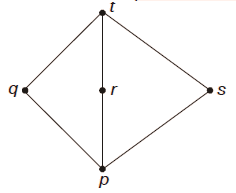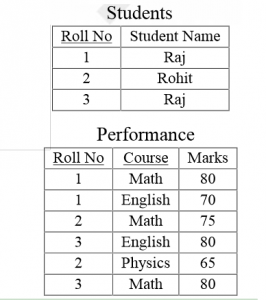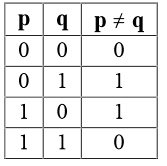GATE-CS-2015 (Set 1)
Question 31
A file is organized so that the ordering of data records is the same as or close to the ordering of data entries in some index. Then that index is called
Question 32
The height of a tree is the length of the longest root-to-leaf path in it. The maximum and minimum number of nodes in a binary tree of height 5 are
Question 34
Question 35
Question 36
Consider a LAN with four nodes S1, S2, S3 and S4. Time is divided into fixed-size slots, and a node can begin its transmission only at the beginning of a slot. A collision is said to have occurred if more than one node transmit in the same slot. The probabilities of generation of a frame in a time slot by S1, S2, S3 and S4 are 0.1, 0.2, 0.3 and 0.4, respectively. The probability of sending a frame in the first slot without any collision by any of these four stations is _________.
Question 37
Suppose the following disk request sequence (track numbers) for a disk with 100 tracks is given: 45, 20, 90, 10, 50, 60, 80, 25, 70. Assume that the initial position of the R/W head is on track 50. The additional distance that will be traversed by the R/W head when the Shortest Seek Time First (SSTF) algorithm is used compared to the SCAN (Elevator) algorithm (assuming that SCAN algorithm moves towards 100 when it starts execution) is _________ tracks
Question 38
Consider the following C function.
int fun1 (int n)
{
int i, j, k, p, q = 0;
for (i = 1; i < n; ++i)
{
p = 0;
for (j = n; j > 1; j = j/2)
++p;
for (k = 1; k < p; k = k*2)
++q;
}
return q;
}
Which one of the following is the time complexity for function fun1?
Question 39
Consider a max heap, represented by the array: 40, 30, 20, 10, 15, 16, 17, 8, 4. Now consider that a value 35 is inserted into this heap. After insertion, the new heap is
Question 40
Suppose L = {p, q, r, s, t} is a lattice represented by the following Hasse diagram:
 For any x, y ∈ L, not necessarily distinct, x ∨ y and x ∧ y are join and meet of x, y respectively. Let L3 = {(x,y,z): x, y, z ∈ L} be the set of all ordered triplets of the elements of L. Let pr be the probability that an element (x,y,z) ∈ L3 chosen equiprobably satisfies x ∨ (y ∧ z) = (x ∨ y) ∧ (x ∨ z). Then
For any x, y ∈ L, not necessarily distinct, x ∨ y and x ∧ y are join and meet of x, y respectively. Let L3 = {(x,y,z): x, y, z ∈ L} be the set of all ordered triplets of the elements of L. Let pr be the probability that an element (x,y,z) ∈ L3 chosen equiprobably satisfies x ∨ (y ∧ z) = (x ∨ y) ∧ (x ∨ z). Then
 For any x, y ∈ L, not necessarily distinct, x ∨ y and x ∧ y are join and meet of x, y respectively. Let L3 = {(x,y,z): x, y, z ∈ L} be the set of all ordered triplets of the elements of L. Let pr be the probability that an element (x,y,z) ∈ L3 chosen equiprobably satisfies x ∨ (y ∧ z) = (x ∨ y) ∧ (x ∨ z). Then
For any x, y ∈ L, not necessarily distinct, x ∨ y and x ∧ y are join and meet of x, y respectively. Let L3 = {(x,y,z): x, y, z ∈ L} be the set of all ordered triplets of the elements of L. Let pr be the probability that an element (x,y,z) ∈ L3 chosen equiprobably satisfies x ∨ (y ∧ z) = (x ∨ y) ∧ (x ∨ z). Then There are 65 questions to complete.
Last Updated :
Take a part in the ongoing discussion


